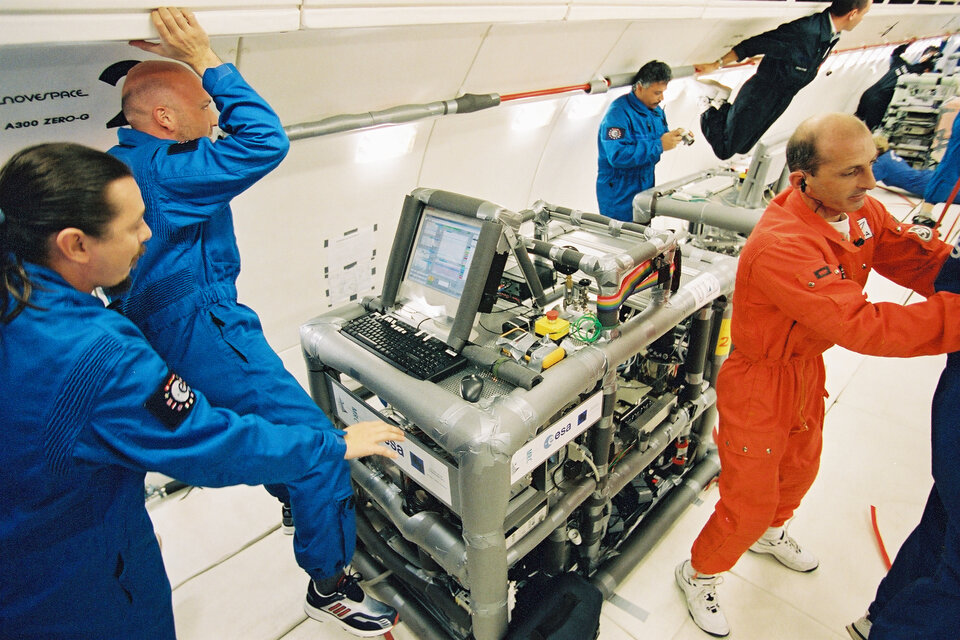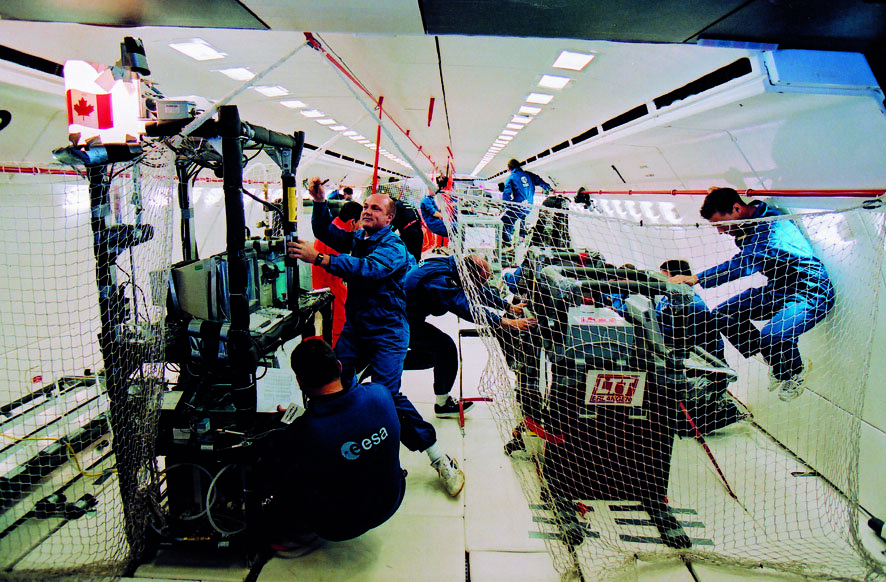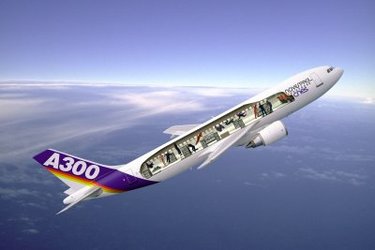Countdown for ESA’s 46th Parabolic Flight Campaign
Microgravity research takes many forms. The most spectacular and high profile experiments take place on board the International Space Station, but ESA has access to a number of other low cost facilities. One of these facilities is a modified Airbus A-300 aircraft that provides frequent, repeated periods of weightlessness during each 3 hour flight.
European scientists and engineers taken advantage of this opportunity for many years, and this week sees the launch of ESA’s 46th parabolic flight campaign. Eleven technology development experiments and investigations in the fields of physical and life sciences are currently being loaded onto the Airbus in Bordeaux, France, for the flight campaign to be held 13 - 15 November.
Perhaps the most exciting of all the experiments is a German investigation of metallic foam put forward by the Technical University and Hahn-Meitner Institute of Berlin, in collaboration with the Swedish Space Corporation. This will involve X-ray studies of various metals which have been melted and turned into a foam by blowing air or gases through them to create bubbles.

“This is the first time that the internal structure of such foam has been probed with X-rays in microgravity,” said Vladimir Pletser, Project Manager of the ESA Parabolic Campaign.
“Metallic foam is something new in applied research,” he added. “It is able to keep its strength while being much lighter. There are many potential applications, notably in the aeronautics industry where engineers want to decrease the mass / size ratio. Another likely application would be for car bumpers, since the foam would act as a shock absorber.”
Among the experiments that have flown on previous parabolic flights is one which has a bearing on how the Earth and other planets were born some 4.6 billion years ago. A German-UK team is taking advantage of the microgravity conditions to investigate how tiny dust and ice grains around the young Sun came together and grew, eventually snowballing into the predecessors of the planets we see today.
The life science experiments include a Belgian investigation into ways of minimising the loss of muscle and bone mass by astronauts who participate in long-duration spaceflights. During each flight, a human test subject will be required to run on a treadmill while pulled down by a harness that provides a force equivalent to normal gravity on Earth. This type of experiment is quite a challenge in the ever-changing gravity environment of the Airbus.
“After completion of the final ground preparations, the experiments are now being installed in the aircraft,” said Vladimir Pletser. “The installation and final safety checks will be completed on Monday 12 November, with the first flight scheduled for the following day.”

Following take off from Bordeaux-Mérignac airport at around 9.30 am, the Airbus and its teams of researchers will head out over the Bay of Biscay – weather permitting – for a series of 31 parabolas. Once the first 'warm up' ascent and descent is completed, the experimental schedule will be up and running.
Each parabola lasts about one minute, of which the microgravity phases lasts a fleeting 20 seconds. Either side of this brief encounter with weightlessness, the aircraft and its occupants will experience a maximum of 2 g (twice normal gravity) during the steep climb and around 1.8 g during the descent.
French company Novespace owns and operates the A300 Zero-G aircraft, and is in charge of the preparation of the flight campaigns. ESA sponsors the flight opportunity.
ESA has a permanent offer of opportunity open for researchers wanting to take advantage of the agency’s parabolic flight campaigns. Applications may be put forward at any time. The proposals undergo a peer review by experts from outside ESA and are selected on scientific merit.
The 47th ESA Parabolic Flight Campaign is scheduled to take place 18 – 20 December.





